Strategic Plan
Moving Forward strategically
Supporting the university's education and missions.
In continuous support of the University’s Commitment to Education and Mission, and through our commitment to advance the strategic priorities set forth by the Chancellor’s Cabinet, Academic Affairs presents a strategic plan for 2022-2025.
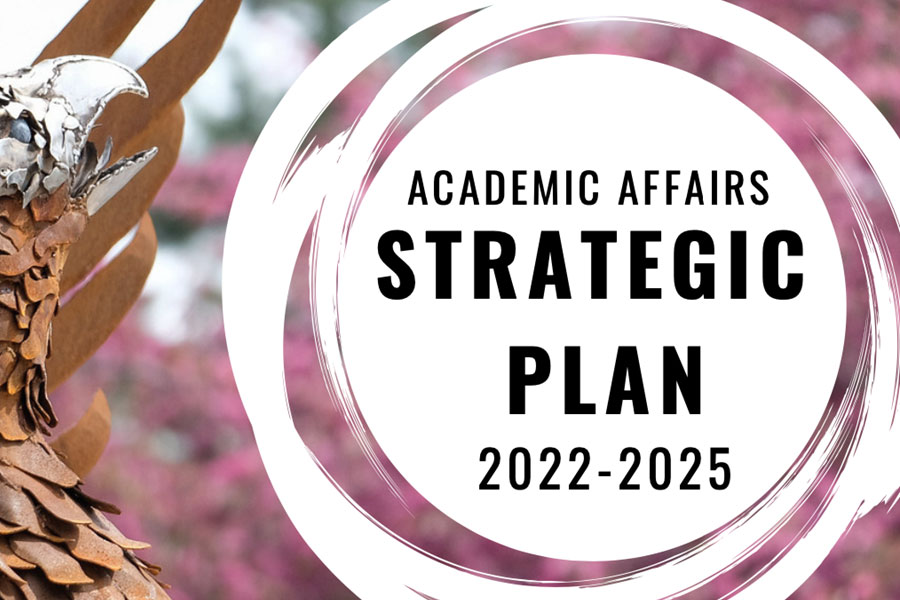
Introduction
With six goals and numerous objectives, this plan will guide Academic Affairs’ decisions and actions for the next several years. While the objectives and actions may continue to evolve as needed, it still provides a clear understanding of where Academic Affairs is focusing efforts and resources over the next several years. We have developed and approved this plan to ensure that UW-Green Bay is an institution that exists for the common good, that it provides an education that leads to opportunity for our students and that it helps to solve problems that improve the quality of life in our region.
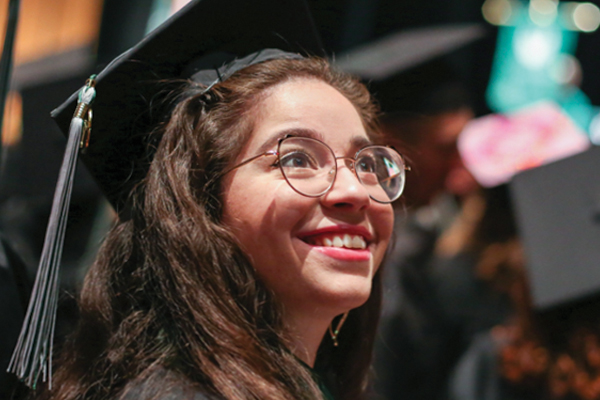
GOAL 1 - Improve Student Success and Retention
Support the whole student from their experience in the classroom to co-curricular activities. Student success is our top priority regardless if the student is residential or a commuter, traditional age or starting later in life.
Actions:
- Create a comprehensive retention plan.
- Develop a proactive collaborative support network for at-risk students.
- Develop and integrate a modern advising system.
- Develop a process for secondary admission when students are not admitted to certain majors.
- Reduce the number of high DFW courses.
- Articulate clear paths to degree attainment.
Actions:
- Create and implement a comprehensive first-year experience for all.
- Increase variety, quantity, and quality of spaces where students, faculty, and staff can gather to develop a greater sense of community and connectedness.
- Expand Phlash TIX collaboration between Good Times Programming and Weidner Center.
- Expand the use of Navigate.
- Integrate HIPs (High Impact Practices) intentionally within the curriculum.
- Develop and implement a robust assessment program to inspire continuous improvement of student learning.
Actions:
- Continuously monitor undergraduate offerings to ensure they meet regional needs.
- Expand Master’s Degree offerings.
- Expand doctoral-level program offerings in our programs of strength.
- Expand certificate programs.
- Expand and highlight online and accelerated degree options.
- Increase collaborative offerings with UW-Extended Campus, other UW institutions, and non-UW institutions.
- Develop and implement non-credit programming/training collaboratively across colleges and divisions that incorporate pathways to degrees, career advancement, and/or workforce development.
- Increase pre-college programming and pathways for K-12 across all areas, including international partnerships for high school college credit options.
- Embed career or post-graduate prep experiences into every program we offer.
Actions:
- Revise General Education Program to align with the university mission.
- Expand the Bridge and Gateway to Phoenix Success (GPS) programs.
- Expand Rising Phoenix Early College High School Program.
- Identify specific community partners to support access funnel.
- Create intentional pathways to graduate programs (including support).
- Revise and highlight credit for prior learning processes.
Actions:
- Identify pain points for academic programs using the Weidner programming resources to expand the classroom.
- Create an awareness campaign for opportunities the Weidner has to offer Academic Affairs.
- Explore the concept of using the Weidner programming as an Affordable Educational Resource (AER).
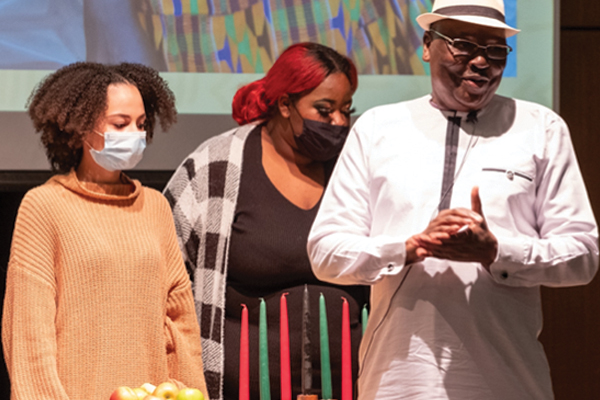
GOAL 2 - Advance Inclusivity
Provide a robust university community that is inclusive through the creation of a welcoming and equitable environment. Inclusivity becomes inherently part of everything we do at UW-Green Bay.
Actions:
- Create dedicated spaces throughout the campus(es) for students, faculty, and staff to reflect/meditate.
- Create additional gathering locations to increase opportunity for students to interact with each other, and to interact with faculty/staff, to build a large sense of connectedness.
- Communicate the availability and purpose of the designated reflection spaces and gathering locations available to students, faculty, and staff.
- Connect instructors to DEI initiatives across all campus locations, particularly as they intersect with the curriculum.
Actions:
- Create a year-long onboarding program for new faculty and staff to ensure they feel part of the university community.
- Provide personal and professional development to our faculty and staff to ensure we are providing a safe and inclusive environment for our students to succeed.
- Develop relationships with organizations that serve diverse populations of potential students.
- Develop a university-wide DEI training program, that incorporates the Inclusivity Excellence training and/or the DEI Certificate training program.
- Engage with Universities of Wisconsin Task Force for diversifying the teacher pipeline.
- Build connections and provide opportunities for targeted high schools.
Actions:
- Create an asset map of how our curriculum and programming engage with and supports DEI.
- Assess library collections to identify gaps in resources for diversity, equity, and inclusion, and make collection purchases to eliminate identified gaps.
- Build an LGBTQ+ archival collection that can be a source for research.
- Expand Inclusive Reads & Conversations series with support from each college and location.
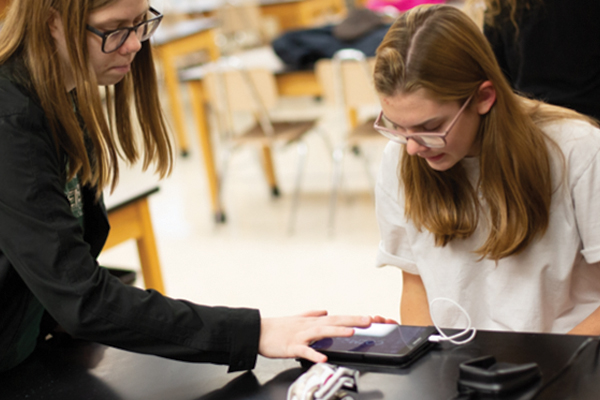
GOAL 3 - Digitally Transform Learning and Working
Evolve our foundational business practices with technology and data. Rethink, reimagine, and reinvent how we operate as a university.
Actions:
- Identify general business operations that require technological improvement to improve the student experience and help with staff workload.
- Develop a set of values to guide technological adoption within Academic Affairs.
- Identify a clear process for requesting financial support for technology adoption.
Actions:
- Develop and implement a vision and strategy, to acquire and make available digital storage space to support preservation of digital content.
- Develop and implement workflows and policies for the life-cycle of digital content designated for temporary storage and access.
- Develop workflows and policies to allow for processing of the University’s born-digital documents that require long-term archival retention and access (e.g. data generated through Federal grants).
- Develop a vision, and proactively collect resources to add into the UW-Green Bay Digital Collections.
- Establish priorities for digital preservation within the University Archives.
- Establish priorities for digital preservation of university-produced content for other university areas/divisions.
- Create a sustainable digital archival storage for the University’s born-digital University of Wisconsin-Green Bay documents.
Actions:
- Expand virtual, online, and digital learning platforms and opportunities for all learners.
- Develop training and resources to properly support faculty/staff as technologies are adopted or current technologies are enhanced.
- Use digital platforms and technologies to position more university work, content, and research to be public facing.
- Evaluate platforms to modernize our product availability and visibility.
Actions:
- Invest in technologies that push HIP (High Impact Practices) and engagement opportunities to students based on their major/needs/interest areas through their smart devices.
- Develop and implement processes to support greater automation in prospect engagement and outreach across the state, nation, and world.
- Develop a strategy to broaden faculty/instructor engagement with and adoption of Open Educational Resources (OER).
- Transform the student experience through technologies by identifying opportunities to integrate individualized student support with educational platforms student and by integrating the physical and virtual campus.
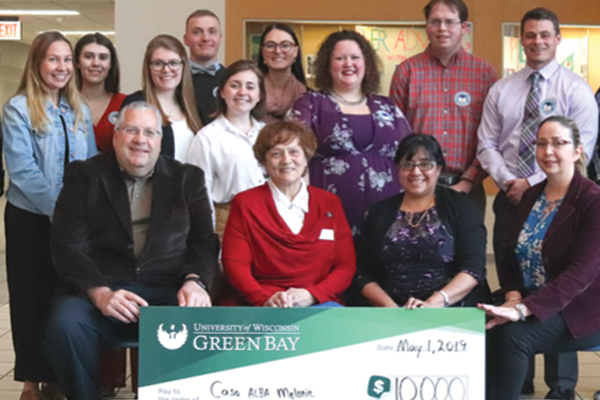
GOAL 4 - Enhance Community Connections and University Philanthropy
Articulate and demonstrate our value and the potential to better serve our community, through increased connections with alumni, area businesses, community organizations and the public.
Actions:
- Formalize advisory boards for Colleges to utilize community expertise.
- Increase opportunities for internships and embedded learning in local businesses and community organizations.
- Expand and promote the work and vision of the Center for Civic Engagement.
- Establish spaces and provide opportunities on our campuses for local business, civic and non-profit organizations to engage with the University through information sharing, physical presence, and collaborative events.
- Create opportunities for alumni to remain engaged with the university through programming and continued learning.
- Improve connection between students, alumni, and university friends with engagement experiences and non-curricular programming.
- Strengthen collaborations with technical colleges.
- Continue collaborating and complimenting K-12 College Prep programs in our community (College Ready, AVID, College Possible, BGC, YMCA, YWCA, etc.)
- Expand visibility and partnerships with New North, New Manufacturing, Digital Alliance, Microsoft, Interapt, Gener8tor, NEW ERA, UA 400, the Einstein Project, and others to enhance workforce development and collaborative grant writing opportunities.
Actions:
- Develop communications to targeted audiences about University activities, resources, and services.
- Utilize NERR as a focal point to celebrate water and its influence on the region’s culture, history, and future.
Actions:
- Increase philanthropic support for curricular and co-curricular areas within Academic Affairs.
- Increase grant procurement.
- Increase scholarships for students.
- Increase and sustain regular information exchange with University Advancement.
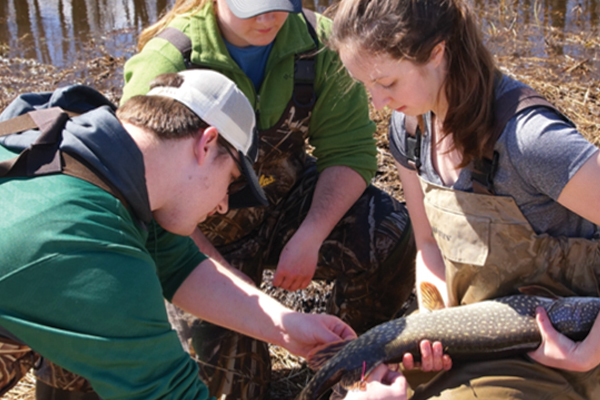
GOAL 5 - Increase Our Visibility and Leadership in Sustainability and Environmental Work
Return to our roots as the initial Eco U, by making a profound impact on the environment and our region through our environmental partnerships and research.
Actions:
- Build a collaboration with academic programs and our environmental centers and resources.
- Establish a digital collection repository for documents pertaining to UW-Green Bay’s natural environs and to house other environmental research done by the university.
- Continue and increase sustainability and environmental projects with local business partners.
- Work with schools to develop and enhance environmental science work in partnership with local businesses and organizations.
- Continue supporting student learning and application around sustainability through the General Education curriculum.
Actions:
- Increase the visibility and role of our environmentally focused centers and institutes through curricular offerings at all locations.
- Create a free, publicly available, and sustainably funded open access institutional repository that hosts scholarly works by employees, including appropriate support and policies for including materials in the repository.
Actions:
- Increase community outreach and education on the NERR.
- Engage K-12 partners in planning related to water education and teacher involvement.
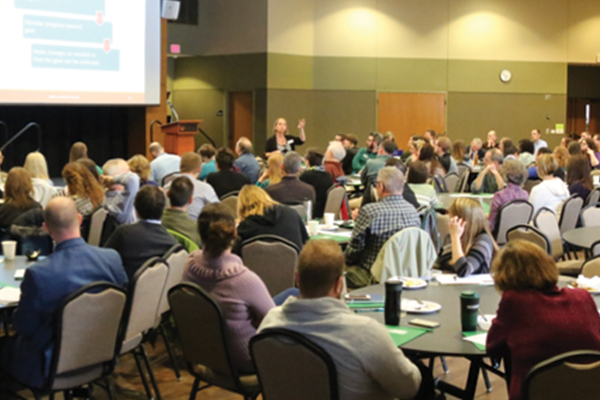
GOAL 6 - Focus on Holistic Development for Faculty and Staff
Create an environment that allows, encourages and supports faculty and staff to grow both professionally and personally.
Actions:
- Provide modern training for grant-seekers and faculty, to prepare them for writing and submitting to extramural sources.
- Support financial professional development initiatives for all staff/faculty.
- Identify and sustain more regular, meaningful funding for professional development.
- Build grant teams for larger grant projects.
- Increase education reimbursement to retain talent.
Actions:
- Create a formal university-wide onboarding for new faculty, including ad hoc instructors.
- Develop training for new chairs.
- Develop and deliver specific training for graduate faculty/mentors.
- Identify areas where leadership growth is necessary to ensure succession planning when possible.
Operational Plan
To learn the timeline priority of the actions identified in this Strategic Plan, view the Academic Affairs Operational Plan 2022-2025.